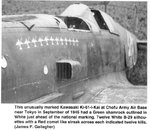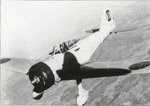Check out this DVD!
In WW2, the United States Navy caught Japanese airplanes. They researched and found the tactics to kill the Japanese fighters. The United States National Archives and Records Administration (NARA) reserves the films of airplanes which were captured by American Navy.
View: https://www.youtube.com/watch?v=doysYtwMgrY
In WW2, the United States Navy caught Japanese airplanes. They researched and found the tactics to kill the Japanese fighters. The United States National Archives and Records Administration (NARA) reserves the films of airplanes which were captured by American Navy.
View: https://www.youtube.com/watch?v=doysYtwMgrY





